Having diagnosed a person with an oncological disease of the stomach tissue, which is of a malignant nature, doctors first try to help the patient with the help of chemotherapy drugs. If the pathology is in too advanced a state or the use of medications has not brought the expected effect, then doctors decide on a radical method of ridding the patient of the tumor, which consists of performing a surgical operation. Its implementation involves complete or partial removal of the most important organ of the digestive system, so that cancer cells do not spread to healthy tissue located in close proximity to the tumor body. This allows not only to significantly prolong the patient’s life, but also to completely recover from cancer.
Indications
Surgery for stomach cancer (gastroectomy) is considered extremely traumatic and dangerous, as already mentioned. But perhaps this is the only chance to save the patient's life. However, even late stages of cancer do not always require such radical measures. There are clear indications for which such an operation is performed:
- Stage 2 stomach cancer with a large tumor size that interferes with normal nutrition, as well as feeding through a tube.
- Stage 3 of malignant lesions of the gastric mucosa with massive lesions of the surrounding (regional) lymph nodes.
- Difficult localization of a malignant tumor. This includes: the pyloric region, the cardiac region, and the middle third of the stomach. These locations are considered inoperable or difficult to operate.
- Multiple stomach tumors. We are talking not only about cancerous, but also about precancerous tumors (polyps), which can become malignant.
- Other reasons are related to the large size of the tumor.
In all other cases, operations for stomach cancer can be more gentle: we can talk about an operation to remove part of the stomach (partial resection), etc.
How is it carried out?
Depending on the severity of the disease, the type of surgical treatment is selected, before which the patient needs to undergo examination.
There are several types of surgical treatment, each involving resection of stomach tissue:
- distal;
- antral;
- proximal;
- subtotal;
- segmental ring-shaped;
- total gastrectomy.
Having determined the direction in cancer therapy, before surgery, a diagnostic examination is required:
- Blood analysis.
- Electrocardiogram.
- Checking the functionality of internal organs: ultrasound;
- X-ray.
Surgery
Organ-conserving surgery for stomach cancer is performed when the tumor is diagnosed in the early stages. Using endoscopic equipment, the surgeon excises the tumor. This does not damage healthy tissue. In later stages, resection for cancer can be partial or complete:
- Subtotal. This means removal almost completely, that is, a section 2-3 cm wide remains in the upper part of the organ.
- Gastrectomy. Removal of the stomach is performed more often when there is a tumor in the upper part of the stomach.
During surgery, a specialist either partially removes the stomach or performs a gastrectomy.
Surgery for stomach cancer is performed under general anesthesia. It all starts with the installation of a probe that removes the accumulated fluid from the peritoneal cavity. Using a laparoscopic approach, the doctor examines the condition of the organ, and only then makes an incision. Further actions depend on the type of surgical treatment:
- Partial removal. Allows the patient to return to a full life after rehabilitation. During the operation, the doctor uses special instruments to remove damaged tissue, having previously disconnected it from the esophagus and intestines. The remains of the stomach are attached to the intestines.
- Total resection. Gastrectomy for stomach cancer involves separating the organ completely from the digestive canal and intestines, which are subsequently connected to each other. Life expectancy after such treatment may be shortened.
After removal, the surgeon examines the abdominal cavity, making sure there is no bleeding. After this, the final sutures are applied. The drainage tube is left in place for several days and then removed. In severe situations, when there is no chance of getting rid of cancer, the surgeon creates a bypass for food, the tumor is not removed.
If metastases are present, the organs in which they are located are excised.
Contraindications
In some cases, surgical intervention may be not only unjustified, but also dangerous. Treatment in this case may be delayed. Removal of the stomach for cancer requires the patient to be in consistently good health: the body is weakened, and such a difficult manipulation can put an end to the patient’s life. When people may not be able to withstand surgery:
- With many distant metastases. In this case, the operation is both unjustified, since there is no point in it, and extremely dangerous due to the serious general condition of the patient.
- In the presence of severe diseases not related to stomach cancer. This includes heart failure, respiratory failure, etc.
- In old age of the patient.
- In the presence of blood pathologies that prevent its normal clotting.
In these cases, surgery does not make sense, since it is almost guaranteed to be fatal. A less traumatic operation or palliative care is indicated.
What worries you at the very beginning?

The initial form of cancer may make itself weakly known. As the tumor grows, it begins to interfere with the normal movement of food through the gastrointestinal tract. Therefore, a person feels full, even if he has eaten just a little. And later pain, nausea, vomiting and constipation follow. If you have to deal with such ailments, you should urgently consult a doctor:
- appetite decreases, the person begins to lose weight;
- constant nausea after eating, severe weakness;
- causeless stool disorder, increased gas formation;
- unpleasant pain in the stomach, becoming permanent, there is no longer a clear connection with food intake;
- rumbling in the intestines;
- aversion to meat food.
As the disease progresses, its manifestations become more pronounced. Oncology is characterized by the following signs:
- no appetite;
- pain in the epigastric region (in the upper abdomen) changes in character, can be constant, not associated with food intake, and dyspeptic symptoms become more pronounced;
- body temperature may rise to subfebrile levels (37.1 – 37.5);
- general health worsens and performance decreases.
Important! Sometimes these signs may indicate the presence of another gastrointestinal disease, or the cancer process is progressing further. In such cases, examination is extremely important. We need an objective picture of pathological changes, which can be obtained through a series of special studies that provide one hundred percent answers to all questions.
Preparation
The patient will have to face an impressive preparatory period. An operation as complex as resection of a hollow organ requires many preparatory measures and a long time. First of all, a set of diagnostic preoperative measures is carried out. Among them:
- Ultrasound diagnostics. Allows you to assess the condition of the organ, as well as the structure and extent of the tumor.
- Contrast radiography of the stomach. Once again, it allows you to visualize the tumor, assess its location, and the extent of the malignant process (degree of invasion).
- FGDS. Allows the doctor to see the tumor and the entire gastric mucosa with his own eyes. It is also used for biopsy to distinguish gastric cancer from polyposis.
- Computer and magnetic resonance imaging. Considered the gold standard for staging stomach cancer. These studies provide extremely detailed images of the organ. However, due to low availability in the CIS countries, they are used relatively rarely.
- Scintigraphy. Allows you to evaluate the vascularization (blood supply) of the tumor.
A number of laboratory tests are also carried out to assess the general health of the patient.
To stop the tumor process and growth of cancer cells, preoperative chemotherapy and radiation therapy are indicated. Taken together, these measures are sufficient to prepare the patient for the intervention.
Consequences of anesthesia after surgery
Almost everyone knows what general anesthesia, or general anesthesia, is. In simple human language, without using medical terms, this is a dream that is caused by the introduction of certain drugs into the body so that a person does not feel pain during surgery. It seems like a good cause to relieve a person of pain during surgery. But every coin has two sides, and in this article I want to talk about the consequences that occur in the human body after undergoing anesthesia. And these consequences can be very difficult to cure, and sometimes even fatal.
Early consequences include cerebral coma and death after surgery. As sad as it sounds, this also happens.
Types of operations
Gastric removal operations can be divided into complete resection (in which the organ being removed is subject to complete resection) and partial (a less radical intervention involving partial removal of the organ). Complete removal, in turn, is divided into:
- Sleeve gastrectomy.
- A total gastrectomy, where the hollow organ is completely removed and the esophagus is connected directly to the small intestine.
There are also variations in partial gastrectomy:
- Subtotal distal resection. In this case, most of the stomach must be removed.
- Proximal gastrectomy. The proximal part of the stomach is removed, two fingers below the middle part of the organ.
The specific tactics of surgical intervention are determined by an oncologist-gastroenterologist. Much depends on the severity of the patient’s condition, the size of the tumor, its prevalence, and the location of the tumor. In some cases, laparoscopic gastrectomy is possible. This operation is considered less traumatic because there is no abdominal access.
Preoperative diagnosis
Before surgical treatment, a number of diagnostic procedures must be performed. It is important not only to clarify the shape and size of the tumor, but also to find out the general condition of the body, since an overly weakened patient simply will not tolerate surgery. The patient is prescribed a series of laboratory and instrumental studies.
- Endoscopic examination. This is the most informative technique; the equipment used allows you to see the pathology visually. Simultaneously with the examination, a biopsy is performed - samples are taken for histology.
- Ultrasound. This examination reveals the presence of secondary lesions; the abdominal cavity, pelvis and chest are examined.
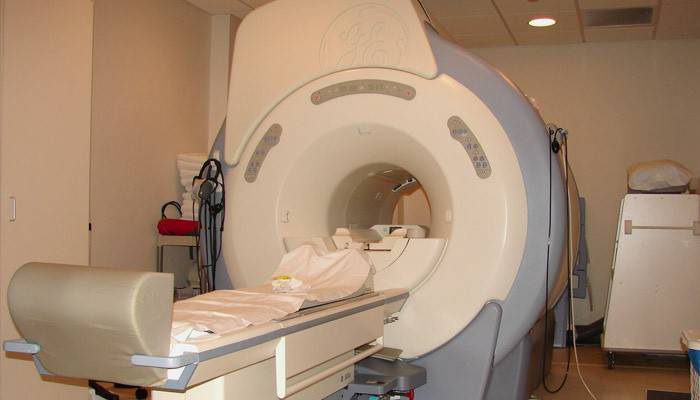
- CT. The study allows you to accurately determine the size of the malignant neoplasm and identify the presence of metastases in other organs.
- Biochemical blood tests. By assessing the results of the examination, it is possible to determine the progress of the inflammatory process and the degree of dysfunction of organs.
- ECG. Prescribed without fail, this study makes it possible to clarify whether there are any malfunctions in the functioning of the heart.
- X-ray. An X-ray examination is prescribed, pictures of the stomach are taken using a contrast agent, as well as pictures of the chest.
- Colonoscopy. This study allows you to assess the condition of the intestines.
If necessary, the patient may be referred for consultation to specialists as part of preoperative diagnostic studies. If problems are identified, symptomatic treatment may be prescribed.
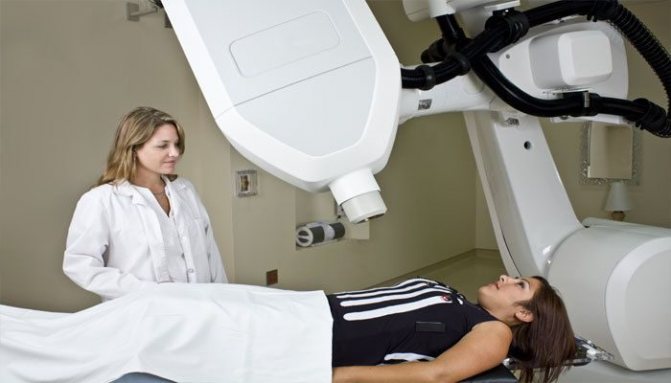
If indicated, diagnostic laparoscopy is performed. This study is necessary if the stomach is completely damaged by a tumor. Its goal is to identify the presence of secondary lesions in the abdominal organs. It is prescribed if it is not possible to diagnose using non-invasive methods.
Stages
The operation, on average, lasts about five to six hours. This is an extremely technically complex manipulation that requires great professionalism of the surgeon. The cost of the operation is about 1.5-3 million rubles, if we talk about Israel. We are talking about costing twice as much in Germany.
The operation begins with the patient being put under anesthesia. Muscle relaxants are also administered to relax the muscles. Then access to the stomach is provided by opening the anterior wall of the abdominal cavity. Access can also be provided through the chest cavity or in a mixed way.
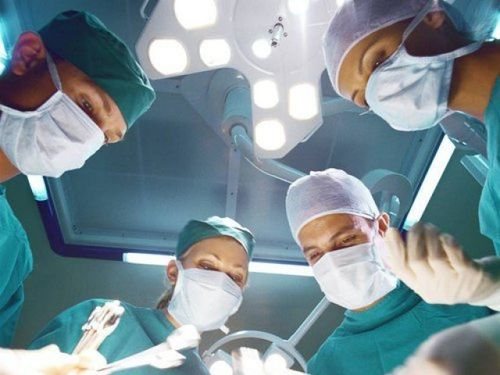
After this, the doctor examines the abdominal cavity, assesses the condition of the cavity itself, as well as the stomach. The next stage is mobilization of the stomach, which means removing the organ and fixing it. Resection of the hollow organ is performed, and then a connection is made between the esophagus and the small intestine. The most critical stage of surgical treatment is mobilization of the stomach, during which the surrounding structures are dissected.
What are the indications for surgery?
Surgical intervention in the treatment of oncology is used in extreme cases when the therapy does not give the desired result. The appearance of the following symptoms “indicates” that surgical treatment cannot be avoided:
- constant heartburn;
- problems swallowing food;
- frequent vomiting (with blood);
- sudden weight loss;
- pain in the peritoneum;
- black cal.
Contraindications
There are cases when a diagnosis is made, but the cancer is considered inoperable. There are a number of restrictions under which operations are not carried out. These include the following contraindications:
- numerous metastases to internal organs;
- accumulation of fluid in the abdominal cavity;
- heart failure;
- kidney problems.
Complications
It is worth noting that those who have undergone gastrectomy surgery have to deal with a lot of complications after gastrectomy. The consequences can be different, including death. In order to reduce risks, each patient is prescribed an individual rehabilitation program. Among the most common complications:
- Anemia. In other words, anemia. It occurs, firstly, due to developing bleeding after surgery. In the first 2-3 weeks, this is considered normal. Later, anemia is caused by a deficiency of Castle factor, which is abundantly produced in the gastrointestinal tract (specifically, in the stomach). To correct the condition, iron-containing medications are prescribed.
- Anastomositis after gastric resection. It is an inflammation of the place where the esophagus overlaps the small intestine. Occurs relatively often. Requires anti-inflammatory treatment and, in some cases, also surgical treatment with repeated anastomosis.
- Postoperative bleeding. Develop frequently. For this reason, the patient must be observed in the intensive care unit for the first time.
- Peritonitis.
- Dumping effect or, in other words, overfilling of the small intestine when overeating (after all, the small intestine is not physiologically adapted to large volumes of food).
- Reflux esophagitis or, more simply, heartburn after removal of the stomach.
- Among other things, cancer can recur after surgery.
The postoperative period of gastrectomy is the most critical. It is at this time that the patient's life is decided.
What other ways are there?

It happens that targeted therapy is prescribed as a selective effect on cancer-affected target cells. Medicines for it are obtained using genetic engineering. After this procedure, the recovery period is more successful.
Radiotherapy is also a necessary adjunct to surgery. After gastric cancer surgery, this is the most important therapeutic procedure, during which the development of cancer cells slows down. Following surgery, it is best to carry out radiation therapy to reduce the symptoms of cancer of the digestive organ, especially in advanced stages. For example, relieve severe pain, improve appetite, reduce bleeding.
What method of therapy will be used for the patient is determined by specialists on a commission.
Forecast
Most patients are interested in how long they live after having their stomach removed. Many people wonder how you can live without a stomach. However, it is quite possible. The absence of a hollow organ does not affect life expectancy; the prognosis for life is favorable. Treatment is aimed at eliminating the cancerous tumor. Therefore, the issue of prognosis should be considered in the context of the tumor process. Here the issue is resolved, as in other cases:
- For stage 1 cancer, the 5-year survival rate is 90%, and the 10-year survival rate is 85%.
- Stage 2 cancer without metastases is somewhat more complicated. The five-year survival rate is 80%, the 10-year survival rate is 75-78%.
- Cancer of the third stage “A” without metastases. 5-year survival rate - 65%. Cancer of the third stage “B” with metastases to regional lymph nodes. 5-year survival rate is 35-45%.
- For stage IV cancer, the prognosis is disappointing. The five-year survival rate is 10-15%.
The life expectancy after removal of the stomach for cancer is considered higher, since the doctor approaches the problem radically.
Where does this problem come from?

- chronic atrophic gastritis, its complications;
- gastric polyps;
- all hyperplastic processes of the mucous membrane;
- consequences of severe forms of acute gastritis;
- hereditary predisposition;
- bad habits, incl. smoking, poor nutrition, strict diets.
Stomach tumors and cancer sometimes occur quickly. This applies to young patients and highly differentiated forms of cancer. But most often they develop over a long period of time, disrupting the patient’s quality of life. That is, a person can independently suspect and, based on some signs, determine why it is time to go to the doctor for examination.
Lifestyle after resection
Recovery and rehabilitation takes from six months to a year. After removal of the stomach for cancer, the patient requires special care in the first 2-3 days. Nutrition is provided through a tube and intravenously. Fluid is also restored through a vein.
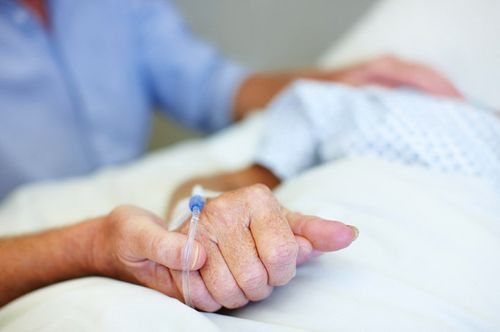
Then the period of self-feeding begins. Diet plays a huge role. How much you can eat and what you can eat is determined by your doctor. However, some general dietary guidelines can be given.
- You need to eat minimal portions of food. This way the intestines will not be overloaded, and the patient’s well-being will not deteriorate.
- Meals should be fractional. You need to eat often and in small portions. You should eat 6-9 times during the day.
- You are allowed to eat fruits, vegetables, cereals, etc. All foods must be pureed and steamed.
With such nutrition, body weight will not fall to critical levels. There is no need to gain it, so the question of how to gain weight is unnecessary. It will be at a stable level, the main thing is to create a nutritious diet. This issue is resolved individually with a gastroenterologist and nutritionist.
Gastrectomy before and after
The portion of the small intestine that is first cut at the lower end of the duodenum is extended straight up to meet the esophagus. The end of the duodenum is reconnected to the small intestine. The entire procedure usually takes 4-5 hours, after which the patient's stay in the hospital is 7-14 days.
Often, patients are advised to avoid food and drink for the first 3-5 days, and tampons are moistened to relieve dry lips and mouth. The new digestive system can be fatal if the connection between the rectum and esophagus remains leaky.
An x-ray test is often used to check for leaks before resuming drinking and eating. The first 2-4 weeks after surgery will be challenging. It may be uncomfortable or painful to eat, but this is a normal part of the healing process. Some surgeons insert feeding tubes to supplement nutrition for a period of time after surgery—something to discuss before surgery.
FAQ
The doctor suggests surgery to remove the stomach, should I agree?
It all depends on the evidence. As already mentioned, there is a list of clear indications for such a dangerous operation. If the doctor considers such an intervention necessary, and your health allows for surgery, this will significantly increase the chances of recovery from cancer.
Does resection affect survival?
It has a direct impact. After resection, survival rates are significantly higher, since the tumor can be completely removed. However, if distant metastases are present, there is little point in treatment. These treatment methods are most effective in the absence of metastases. Accordingly, the patient can live longer and has every chance of recovery.
Other effects of anesthesia on the body after surgery
Now let’s look at the question of whether it is possible to somehow eliminate the effects of anesthesia on the body. Is it possible to somehow combat all these ailments that may arise after undergoing anesthesia? Can. After any general anesthesia, it is imperative to use drugs such as Cavinton and piracetam, which will help the brain recover faster and prevent memory problems and headaches. Be sure to do an electrocardiogram, take a blood test and visit a therapist. There are now psychotherapists who can help cope with panic attacks and feelings of fear that arise after general anesthesia. And you should not use general anesthesia for minor procedures, especially dental treatment. Local anesthesia is quite sufficient, otherwise the joy that the tooth is finally cured can very quickly be replaced by all the sorrows from the consequences of anesthesia. Always remember about the consequences of anesthesia after surgery.
Source: https://med-pomosh.com/?p=224
Recovery

After surgery, the patient is prescribed only intravenous nutrition. 2 days after the stomach transplant, the patient can drink water and eat light, completely ground food. If there were no complications, then the convalescent patient is gradually transferred to a dietary diet. But such nutrition should be done in small portions 6-8 times a day.
If the organ transplant was done correctly, the prognosis for the patient is optimistic. But the patient will have to make considerable efforts to restore the functioning of the digestive system so that the body receives the nutrients it needs. Physical activity is required to stimulate stomach function. The sooner the patient gets up after surgery (within reason), the greater the likelihood of a speedy recovery. A stomach transplant is a very rare operation, so doctors do not guarantee a complete recovery.
Is a stomach transplant possible?
Today, transplantation of many organs has become possible. Doctors successfully transplant kidneys, lungs and even hearts. The stomach is no exception here. But, despite the technical possibility of transplanting this organ, such an operation is performed in very rare cases due to its complexity and danger.
Before performing a gastric transplant, doctors need to carefully weigh the pros and cons. Since a person can live after a complete or partial gastrectomy, and the transplant is a dangerous procedure, the inevitable question arises about the advisability of such an operation.
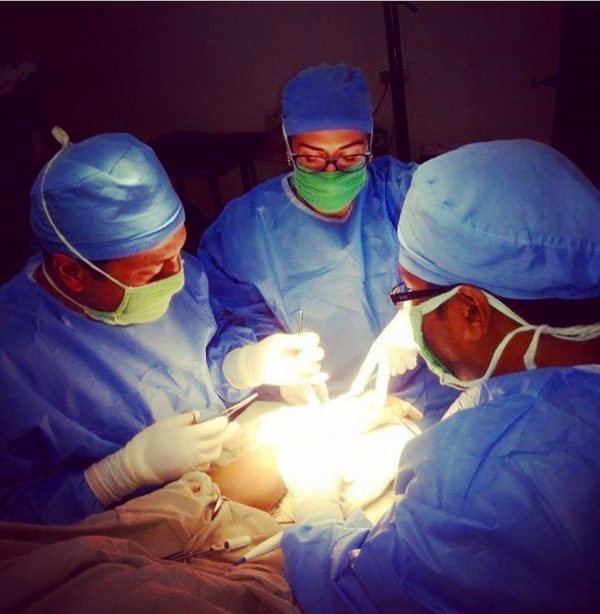
Gastric transplant
If a patient insists on having a new stomach transplanted, the doctor is obliged to inform him of all the possible consequences of such an intervention. Gastric replacement is rarely performed, because doctors do not guarantee the patient’s complete recovery. The greatest likelihood that the transplanted organ will take root occurs when the stomach donor is a person who is closely related to the patient.
The main difficulty of a gastric transplant is associated with the difficulty of incorporating the donor organ into the patient’s circulatory system due to the short length and thickness of the blood vessels. In some cases, the operation cannot be performed without removing the spleen and truncation of the pancreas.
When can a gastric transplant be prescribed?
Gastric transplantation is preceded by a complete gastrectomy. This operation is performed if the following indications exist:
- Malignant tumor.
- Diffuse damage to the organ by polyps.
- Peptic ulcer accompanied by bleeding.
- Perforation of the stomach wall.
- Extreme obesity.
Most often, gastrectomy is prescribed for malignant neoplasms. Cancer causes severe damage to the organ and is often accompanied by secondary pathologies of the digestive system.
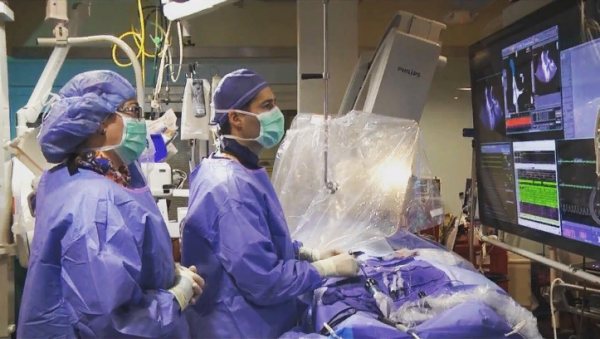
The diffuse form of polyposis is characterized by the abundant development of neoplasms and their damage to a large area of the intragastric surface. However, such tumors cannot be removed. The only treatment here is gastrectomy.
In the case of a peptic ulcer, removal is used in rare situations - only when there is a danger of death.
For serious problems with excess weight, surgery is sometimes performed to reduce the volume of the stomach. As a result, the patient is physically unable to consume too much food.










